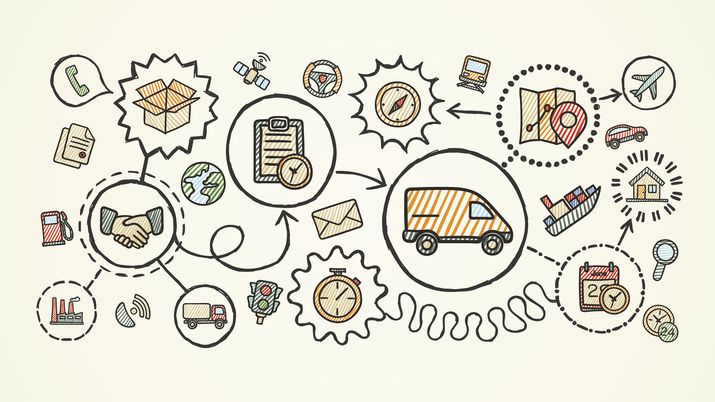COVID-19 Impact on the Logistics and Supply Chain in Information and Communication Technology Industry
Coronavirus disease created pandemic situation all over the world as till the date, the remedies or vaccine for humans to prevent from corona is not found. Increasing spread and uncontrollable impact on the human life is hampering the economy of the world. Governments are taking preventive measures to lower the spread but so far it’s not up to the expectation. The coronavirus pandemic has caused supply chain professionals to face the reality of something but rarely felt the impact. Black Swans are going to impact every business for good or bad. The wholesalers of medicine are at significant risk. India is the world’s leading provider of generic prescription drugs but however 70% of its raw materials came from China and some 33% come directly from the epicenter of coronavirus outbreak. Distribution has faced significant challenges but companies that were able to adapt are at the forefront of where logistics is headed next. One key area seems to be the blending of B2B and B2C.
For instance,
- For 3PLs and other supply chain outsourcing operations, the coronavirus has created the need to be agile and flexible. By supporting bulk freight and breaking down pallets to individual units for consumer level purchases, these professionals can assist customers that quickly adapt to different selling situations.
AFTERMATH STRATEGIES FOR LOGISTICS AND SUPPLY CHAIN MARKET AND GOVERNMENT ROLE
The COVID-19 created major impact on the manufacturing operations as the governments of various countries highlighted the importance of health and safety which has increased the demand of the smart solutions at manufacturing operations. Professionals and enterprises need to begin shoring up inventory there and discussing the scope of the supply chain. It would be important to provide alternate procurement, warehouse protection policies and a change from some previous agile practices. The companies should also start defending ongoing goals by taking a fresh look at old procedures as considered not to be effective.
For instance,
- Technology expenditure and sustainability issues in the supply chain would be core elements of the market. The COVID-19 pandemic has demonstrated many different methods of successfully interacting and conducting business in a remote working environment which is likely to be leveraged by many businesses in the future. Indeed, in the COVID-19 pandemic, those operations with stronger digital infrastructure did better than those without.
OPPORTUNITIES FOR THE MARKET IN COVID-19 SITUATION
Logistics firms have become successful in communicating the exact time of arrival and options for modifying distribution arrangements to customers. For instance, if it varies above a certain tolerance, businesses may use sensors to track package temperature in real time then an alarm can be sent and preventive steps can be taken.
For instance,
- Logistics providers have stepped up to challenge making deliveries safer for employees and customers. The new contact-less last mile delivery solutions have been introduced in the industry which constitutes around 30% of the cost. The use of drones on the delivery of products has started emerging in the industry.
- Data and analytics are pivotal in achieving supply chain resilience. Deliver chain ecosystems are generating giant quantities of records and companies have started applying facts network that capture the full variety of statistics. When groups can efficaciously take advantage of these numerous information streams and share statistics with their delivery chain companions, they can rip big advantage. Getting access to the data and statistics is one step in achieving supply chain resilience.
STRATEGIC DECISIONS FOR MANUFACTURERS AFTER COVID-19 TO GAIN COMPETITIVE MARKET SHARE
The companies have taken many strategic decisions to advantage marketplace their market share after COVID-19. The heavy investments were completed in R&D to invent new ideas to deliver to customers who would be safer to employees and customers. The demand for items via e-commerce has soared but will probable to maintain.
- Develop New Solution: Digitization is the manner of the use of the present day tech solutions collectively with other physical and digital asset to redesign logistics practices. This way they can alter better to the fast paced extraordinarily aggressive and adapt omni-channel business environment.
- Offer New Services to Manage the Supply Chain: Advanced AI have several applications in the supply chain, particularly in warehousing segment which includes gesture reputation solutions as opposed to keyboards and mice inside the procurement manner. It also includes independent vehicles (automated guided vehicle) designed to navigate without human input.
- Other Growth Opportunities for Market Players to Pursue in 2020: Stronger collaboration in the supply chain process and more focus on risk management and supply chain resiliency are the main drivers of the logistics and supply chain industry. This also includes disruptions can be detected on time, close cooperation with supplier and distributors so alternative supply routes can be found on emergency with good incident response plan.
PRICE IMPACT
The COVID-19 lockdown imposed by the countries' governments had a negative effect on the prices of items that deal with the supply chain industry.
IMPACT ON DEMAND
The demand for goods has adversely affected the supply chain and logistics industry. The transportation cost, employee safety cost has affected prices and ultimately resulting in the high cost and less demand for customers.
IMPACT ON SUPPLY CHAIN
The COVID-19 pandemic has adversely affected the supply chain market which results in the shortage of supply of parts, services which were provided by the companies. The supply chain market also affected the cost of the delivering goods due to risk indulged.
CONCLUSION
The logistics and supply chain industry is impacted by the associated challenges. Manufacturers of finished products that are commonly sold across the value chain are unable to provide foreign manufacturers of raw materials. The COVID-19 pandemic affected wholesale and retail activities.






